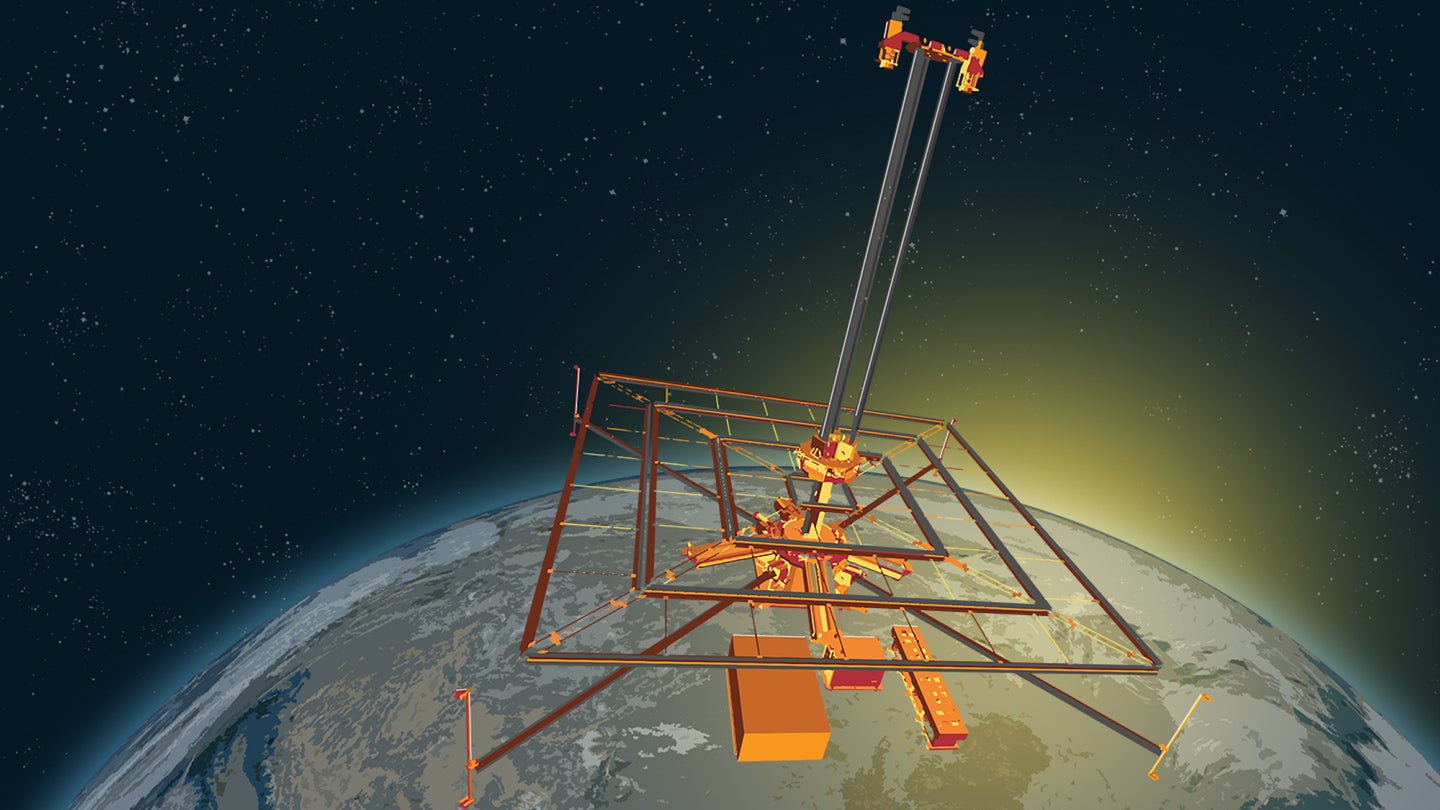A potentially revolutionary solar harvester just left the planet
The 110-pound prototype will send back data on three unique energy projects.

Following over a decade of research, including two years of testing origami-inspired components, a small prototype satellite designed to harvest solar energy launched yesterday morning aboard SpaceX’s most recent Falcon 9 rocket launch in Cape Canaveral, Florida. If its initial experiments are successful, arrays similar to Caltech’s Space Solar Power Demonstrator (SSPD) could one day beam essentially endless renewable energy back to Earth via microwave transmitters.
After reading a Popular Science article on the concept in 2011, Caltech Board of Trustees lifetime member Donald Bren approached the school in hopes of making the science fiction idea a reality. The resultant Space Solar Power Project, co-funded by defense manufacturer Northrop Grumman alongside the Bren family’s $100 million endowment, saw its first major milestone completion yesterday via the SSPD arrival above Earth.
[Related: This space-adapted solar panel can fold like origami.]
Over the next few weeks and months, the roughly 110-pound prototype will send back data on three main projects. The Deployable on-Orbit ultraLight Composite Experiment (DOLCE) will test lightweight, foldable structures that can unfurl to collect sunlight. Meanwhile, ALBA (Italian for “dawn”), a collection of 32 different varieties of photovoltaic cells, will determine which could work best in the space’s extremely harsh environment. Finally, the Microwave Array for Power-transfer Low-orbit Experiment (MAPLE) will test microwave transmitters that may one day transmit the collected solar power via wireless electricity.

Speaking yesterday with The Los Angeles Times, Caltech senior researcher Michael Kelzenberg explained that the SSPD’s first tests are not meant to supply Earth with solar space energy just yet. Instead, the team hopes to begin determining which materials, designs, and methods could result in the most efficient and affordable solutions in the future.
[Related: Solar energy company wants to bolt panels directly into the ground.]
It’s hard to overstate just how revolutionary the prospect of space solar energy farming could be for humanity’s power needs. In 2007, a study from the National Space Society estimated that a single, half-mile wide band of photovoltaics orbiting above Earth could hypothetically generate the same amount of energy as the entire planet’s remaining oil supplies over the course of just one year. To do this, Popular Science explained in 2011 that high energy lasers could transmit the solar supply back to Earth at roughly 80 percent efficiency to a global network of receivers, thus providing clean power across the world, even to places with previously unreliable electricity grids.
A multitude of hurdles remain, most notably the vast costs attached to any space engineering project. Still, as Ali Hajimiri, Caltech’s Bren Professor of Electrical Engineering and Medical Engineering and co-director of SSPP, explained in a statement, “no matter what happens, this prototype is a major step forward.”
